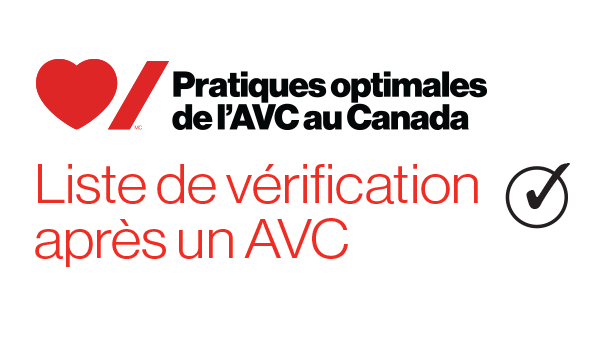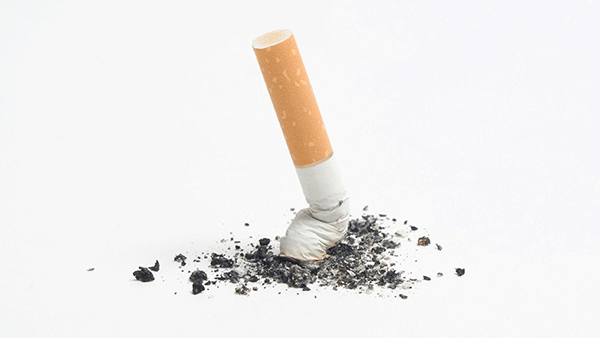- Définition et considérations
- 1. Soutenir les personnes ayant subi un AVC, leur famille et leurs aidants
- 2. Éducation des personnes ayant subi un AVC, de leur famille et de leurs aidants
- 3. Planification des soins interprofessionnels et communication
- 4. Participation communautaire après un AVC
- 5. La transition aux soins de longue durée après un AVC
- 6. Dépression après un AVC
- 7. Fatigue après un AVC
1. Soutenir les personnes ayant subi un AVC, leur famille et leurs aidants
6ème édition - 2019 MISE À JOUR
Recommandations
1.0 Les personnes ayant subi un AVC, leur famille et leurs aidants devraient être évalués et préparés à la transition entre les stades et milieux de soins par la communication de renseignements, l’éducation, l’acquisition de compétences, le soutien psychosocial, l’information relative aux services et ressources communautaires et l’aide pour y accéder [niveau de preuve B]. Les interventions doivent être centrées sur la personne et la famille, et adaptées à leurs valeurs et besoins individuels [niveau de preuve C].
1.1 Dépistage et évaluation
- Les personnes ayant subi un AVC, leur famille et leurs aidants devraient faire l’objet d’un dépistage du niveau d’adaptation, du risque de dépression et d’autres problèmes physiques et psychologiques [niveau de preuve B]. Idéalement, le dépistage devrait avoir lieu à chaque transition et ponctuellement, le cas échéant. Pour de plus amples renseignements, consulter les chapitres suivants des Recommandations : L’humeur, la cognition et la fatigue après un AVC; La réadaptation et le rétablissement après un AVC; et La prise en charge de l’AVC en phase aiguë.
- Il faut se servir d’outils et d’approches de dépistage validés autant que possible pour assurer l’uniformité de l’approche et cerner les problèmes potentiels pendant les transitions [niveau de preuve C]. Voir au tableau 1 : Outils d’évaluation de la participation et de la qualité de vie liée à la santé.
- Les personnes ayant subi un AVC, leur famille et leurs aidants devraient faire l’objet d’une évaluation approfondie qui détermine leur état de préparation à l’apprentissage et leur capacité de mettre en pratique les connaissances, l’éducation et le soutien psychosocial, et d’accéder aux renseignements et aux services sociaux appropriés en matière de santé [niveau de preuve B]. Voir la section 2 pour d’autres recommandations sur l’éducation et le perfectionnement.
- Les sujets suivants peuvent s’avérer utiles pour évaluer la capacité d’un membre de la famille ou d’un aidant de prendre soin de la personne ayant subi un AVC :
- L’état de santé actuel, l’emploi, les responsabilités sociales et la façon de gérer ces questions dans le cadre des soins de l’AVC [niveau de preuve B];
- les capacités et l’expérience relatives à la prestation de soins à la personne ayant subi un AVC [niveau de preuve C];
- les problèmes de ressources comme la situation financière, le logement, le transport, l’assurance, les prestations de soins de santé et la couverture du coût des médicaments [niveau de preuve C];
- le soutien des membres de la famille, des parents et des réseaux sociaux [niveau de preuve C];
- la capacité de s’adapter et de gérer le stress supplémentaire dû au fait de prendre soin d’une autre personne après un AVC [niveau de preuve C].
- Le type d’évaluation et sa profondeur devraient correspondre aux besoins de la personne, aux problèmes cernés au cours du dépistage et au stade de transition [niveau de preuve C].
- Les sujets suivants peuvent s’avérer utiles pour évaluer la capacité d’un membre de la famille ou d’un aidant de prendre soin de la personne ayant subi un AVC :
- Lorsque des dépistages et évaluations indiquent des problèmes, il faudrait diriger les personnes ayant subi un AVC [niveau de preuve B], leur famille et leurs aidants [niveau de preuve C] vers les experts et les services appropriés pour les régler et optimiser les résultats.
1.2 Soutenir les personnes ayant subi un AVC, leur famille et leurs aidants
- Le soutien devrait commencer dès le début de l’AVC et se poursuivre tout au long des transitions et des stades de soins [niveau de preuve B].
- L’utilisation de la télémédecine (p. ex., la vidéo et les technologies et services en ligne comme les groupes de soutien et la téléréadaptation) devrait être envisagée pour accroître l’accès aux services de soutien continus, aux services de santé et aux thérapies de réadaptation après la transition vers la communauté, particulièrement dans les milieux où les personnes ayant subi un AVC et les membres de leur famille sont dans l’impossibilité de s’y rendre pour y avoir accès [niveau de preuve B]. Pour de plus amples renseignements, consulter la trousse d’outils de télé-AVC des Recommandations.
- Les personnes ayant subi un AVC, leur famille et leurs aidants devraient recevoir de l’information sur les groupes de soutien par les pairs dans leur collectivité, le cas échéant et des descriptions des services et des avantages qu’ils offrent. Ils devraient être encouragés à y participer [niveau de preuve C].
Cette liste de vérification est fournie à titre indicatif pour favoriser la mise en pratique de recommandations fondées sur des données probantes et un consensus dans l’élaboration d’un plan d’action concerté pour chaque personne, à mesure que celle-ci vit des transitions vers différents milieux et stades de soins.
La liste s’applique aux soins primaires, au service des urgences, aux soins de courte durée, ainsi qu’aux milieux communautaires et de réadaptation, de soins complexes, de transition et de soins de longue durée. Elle devrait permettre aux membres de l’équipe de soins d’avoir des discussions concrètes avec la personne ayant subi un AVC et sa famille sur les renseignements et les services nécessaires pour assurer des transitions de soins positives et réussies.
Soutien potentiel aux personnes ayant subi un AVC, à leur famille et aux aidants:
- Un soutien à la prise de décision et à la participation au sujet des transitions entre les différents stades de soins.
- Des renseignements exacts et à jour sur le prochain milieu de soins, les attentes à avoir et la façon de s’y préparer.
- L’accès à des soins réparateurs et à une réadaptation active pour améliorer ou maintenir les fonctions selon le plan de soins personnalisé.
- La planification préalable des soins, les soins palliatifs et les soins en fin de vie, le cas échéant.
- La consultation, la préparation et l’évaluation continue pour l’adaptation au changement du milieu de vie, des capacités, des responsabilités et des relations sociales, de la participation, des loisirs, des activités professionnelles et de l’environnement à domicile. Les répercussions sur la famille (p. ex., conjoint, partenaire ou enfants), les problèmes potentiels de ressources (p. ex., finances) et l’autonomie (p. ex., conduite automobile) sont tenus en compte.
- Les plans d’action concertés devraient contenir des instructions et des recommandations écrites concernant la sortie, y compris les objectifs et le suivi des soins.
- L’accès à une personne-ressource désignée à l’hôpital ou dans la communauté pour assurer la continuité des soins et répondre aux questions.
- L’accès à des organismes de santé et de services sociaux appropriés selon les besoins et le stade de la transition et du rétablissement, ainsi qu’aux conseils qu’ils offrent.
- Des liens et des renseignements sur les organismes communautaires locaux comme les groupes sur l’AVC, les programmes de visites par des pairs, les organismes qui fournissent des repas et d’autres services et organismes.
- Dans la mesure du possible, l’accès au soutien par des pairs ayant subi un AVC et vécu des transitions après la phase aiguë.
- Toutes les communications devraient être disponibles dans des formats adaptés à l’aphasie, le cas échéant, et en fonction de la littératie en matière de santé des personnes ayant subi un AVC, de leur famille et de leurs aidants.
Cette recommandation appuie les objectifs suivants : mettre l’accent sur la nécessité d’une approche globale des soins; aider les personnes qui ont subi un AVC, les familles et les aidants à naviguer dans le système de santé, particulièrement après le stade initial des soins de courte durée de l’AVC; définir les diverses composantes du soutien; favoriser une approche axée sur les personnes qui ont subi un AVC et sur leur famille; et combler les besoins en dehors des répercussions physiques de l’AVC.
L’AVC change toute une vie et nécessite parfois une longue convalescence qui laisse souvent la personne qui a subi un AVC aux prises avec des déficits fonctionnels qui perdurent. Son incidence se fait aussi sentir chez les proches de la personne. On s’attend de plus en plus à ce que les membres de la famille et les aidants assument des fonctions, des tâches et des responsabilités qui peuvent dépasser leurs compétences et connaissances actuelles ou leurs ressources sur le plan physique, financier ou temporel. Cela augmente le fardeau des aidants et peut entraîner une dépression chez ceux qui s’occupent d’un patient ayant subi un AVC (le taux de cas signalés est aussi élevé que 60 %). Des taux similaires de dépression après un AVC sont observés chez les personnes qui ont subi un AVC et sont liés à une évolution décevante de la maladie.
Un dépistage, une évaluation et une surveillance plus dynamiques des besoins et du degré d’adaptation des patients, de leur famille et de leurs aidants représentent une démarche globale axée sur le survivant et sa famille en matière de soins après un AVC, laquelle devrait mener de manière optimale à de meilleurs résultats, notamment sur le plan de l’adaptation.
Les transitions de soins ont lieu dans tout le continuum des soins de l’AVC, y compris aux soins primaires, au service des urgences, aux soins de courte durée, ainsi qu’aux milieux communautaires et de réadaptation, de soins complexes, de transition et de soins de longue durée. Pour assurer le soutien de la personne qui a subi un AVC, de sa famille et des aidants, dans tous ces milieux et au moyen d’une approche individualisée, il faudrait mettre en place des processus et des mécanismes, notamment:
- des protocoles visant à faire participer les personnes qui ont subi un AVC et leur famille aux réunions de planification de la transition de l’équipe de soins et à la prise de décisions concertée relativement à l’établissement d’objectifs à tous les points de transition;
- des ressources et mécanismes de planification et de prestation de services communautaires qui tiennent compte des besoins du survivant, du membre de sa famille ou de l’aidant (p. ex., services de soins à domicile et soutien psychologique);
- des modèles de soins comprenant des technologies comme la télémédecine, le suivi téléphonique et le soutien par le Web;
- des hôpitaux, des services de soins à domicile, des établissements de réadaptation et de soins de longue durée et d’autres services communautaires pour le traitement des personnes ayant subi un AVC recevant les ressources nécessaires, y compris des personnes-ressources, des gestionnaires de cas et des coordonnateurs du système pour coordonner et gérer les transitions de soins de l’AVC;
- un apprentissage et un perfectionnement continus des professionnels de la santé en matière de soins de l’AVC axés sur le patient qui a subi un AVC et sa famille, dans tous les milieux traitant les patients touchés par l’AVC;
- des possibilités d’apprentissage et de formation pour les personnes qui ont subi un AVC, leur famille et leurs aidants pour leur permettre d’offrir du soutien par les pairs sur demande;
- l’accès à des services de soutien à l’autogestion de la maladie grâce aux technologies de télémédecine, en particulier dans les zones rurales et autres endroits aux ressources locales insuffisantes.
Indicateurs de rendement clinique et du système de santé
- Le nombre et le pourcentage de personnes ayant subi un AVC qui ont reçu un diagnostic de dépression après un AVC, calculés à chaque point de transition par rapport au nombre total de cas d’AVC.
- Le nombre et la fréquence des personnes ayant subi un AVC réadmis à l’urgence ou en soins de courte durée pour des raisons liées au déclin physique ou à l’incapacité de s’adapter après une première hospitalisation après un AVC.
Mesures des expériences et des résultats déclarés par les personnes ayant subi un AVC (MEDP et MRDP)
- L’évolution du fardeau des soins pour les membres de la famille et les aidants a été mesurée aux points de transition tout au long de la période de rétablissement et à la suite de changements dans l’état de santé des personnes ayant subi un AVC.
Notes relatives à la mesure des indicateurs
- Des mesures normalisées et validées de la dépression et du fardeau des aidants devraient être utilisées pour suivre la fréquence et la nature des changements dans ces situations.
- Le diagnostic d’incapacité de s’adapter doit être posé selon les codes de Classification statistique internationale des maladies et des problèmes de santé connexes (CIM-10) appropriés.
- Les données sur les réadmissions se trouvent dans les métadonnées du Système national d’information sur les soins ambulatoires (SNISA) et de la Base de données sur les congés des patients (BDCP) de l’Institut canadien d’information sur la santé (ICIS).
Renseignements sur le fournisseur de soins de santé
- Agir en vue de soins optimaux communautaires et de longue durée de l’AVC :une ressource pour les fournisseurs de soins de santé
- J. Cameron et M. Gignac. Timing it Right, 2008 (en anglais seulement)
- Guide des pratiques optimales de l’Association des infirmières et infirmiers autorisés de l’Ontario sur les transitions de soins (en anglais seulement) –
- Guide de l’Association des infirmières et infirmiers autorisés de l’Ontario sur les soins axés sur la personne et la famille (en anglais seulement)
Ressources à l’intention des personnes ayant subi un AVC, des familles et des aidants
- Prendre en main son rétablissement : fiche d’information sur la réadaptation et le rétablissement
- Prendre en main son rétablissement : fiche d’information sur les transitions et la participation communautaire
- Votre cheminement après un AVC : un guide à l’intention des survivants de l’AVC
- Liste de contrôle post-AVC
- Le répertoire des services et ressources de Cœur + AVC
- Guide familial de l’AVC pédiatrique
- Les ressources à l’intention des patients du Partenariat canadien pour le rétablissement de l’AVC
- L’AVC chez les jeunes adultes
- American Stroke Association (en anglais seulement)
- Organismes de soutien de l’Organisation mondiale de l’AVC (en anglais seulement)
- Info AVC
- Prendre en charge votre rétablissement avec un AVC : Aide-mémoire pour les soins de santé virtuels 2020
Tableaux de données probantes et liste de reference (en anglais)
Following stroke, patients, families and informal caregivers are typically faced with multiple life changes and challenges as the person with stroke transitions between the stages of recovery. Gallacher et al. (2013) reviewed 69 qualitative studies examining the concept of patient burden following stroke, highlighting the impact it may have on the effectiveness of interventions and patient satisfaction with health care services. The authors identified the components of stroke recovery that were particularly burdensome to patients including receiving information, interacting with others, comparing treatment options, managing in different environments (acute care, inpatient rehabilitation, community, society) and adjusting to daily activities. Caring for a person following a stroke may also have a considerable impact of the health and vocational status of caregivers. Caregivers reported spending significantly longer periods of time providing caring for persons with stroke, relative to pre-stroke levels (Olai et al. 2015). Depression and anxiety may also be increased. Loh et al. (2017) estimated the prevalence of depressive symptoms and anxiety among stroke caregivers to be 40.2% and 21.4%, respectively. Hayes et al. (2009) conducted telephone interviews with 275 veterans who had sustained a first-ever stroke and their informal caregivers to explore the association between caregiver characteristics and the development of injuries. Caregivers who reported a physical injury were more likely to report higher levels of burden, provided more hours of care per week, exhibited more depressive symptoms and fewer healthy days per month compared to carers reporting no injury. The most common type of injury reported was a back injury and 53% of injured carers stated that the injury interfered with their ability to provide care. Significant predictors of injury were higher caregiver burden (OR=1.62, 95% CI 1.14-2.31, p=0.008) and depression (OR=1.10, 95% CI 1.04-1.17, p=0.001). Ko et al. (2007) interviewed 132 caregivers and reported that while 52% were working full time or part-time, prior to the stroke, the majority of working caregivers reported reducing their hours of paid work, or missing work, while 9 caregivers retired or resigned. Rochette et al. (2007) reported that 6 months following stroke, 35.2% of spouses, of a sample of 54 had a high level of burden (Caregiver Strain Index score ≥7) and 17% were identified with possible depression (Beck Depression Inventory BDI score ≥10).
The needs of patients and their informal caregivers has been explored in several qualitative studies using in-person or telephone interviews. Similar themes emerged across studies. Cameron et al. (2014) included 16 patients recruited from an inpatient rehabilitation stroke facility and 15 informal caregivers, who were interviewed following their first weekend pass from inpatient rehabilitation and again 4 weeks following discharge home. Twenty health-care professional (HCP) were also interviewed. Three key themes emerged including issues surrounding preparing patients for safe return home. Patients discussed the need to feel safe in the home environment while caregivers discussed their need to feel supported. Assessing the patient for readiness was a key theme discussed by HCPs. Patients noted gaining insight into what life would be like, and caregivers evaluated their abilities to care for the person with stroke. Patients and caregivers discussed the range of emotions they experienced and how their experienced changes before and after the weekend pass. In a similar study including 24 informal caregivers to persons with stroke and 14 HCP (Cameron et al. 2013), the themes emerged from both the caregivers and the HCP concerned the type and intensity of support needed, who provides support and the method of providing support and the primary focus of care. Creasy et al. (2013) interviewed 17 family caregivers close to the point of discharge from hospital and the again within 4 months of discharge. In the first interview, caregivers expressed information needs related to their role as caregiver in preparation for discharge home and expressed concerns for their own emotional support needs and their ability to provide emotional support. During the second interview caregivers discussed their experiences with caregiver-provider interactions, some of which were positive, others, negative. The caregivers of 90 patients were interviewed one year following stroke (Smith et al 2014). Caregivers reported delays and barriers waiting for applications/funding for alterations to make the home more accessible, having to provide care in the immediate post-discharge period with no skills training and lack of follow-up with GPs. They also described difficulties coping with patients’ quick anger and emotional lability and lack of attention to their physical and emotional ability to provide care.
The feasibility and effectiveness of telestroke has also been evaluated in the context of rehabilitation therapy, where it is often referred to as “telerehabilitation” or “telerehab”. The results of these studies have been ambiguous. Chen et al. (2016) included the results of 7 RCTs that included patients who received rehab therapies through telemedicine systems for a minimum of 4 weeks in duration via virtual reality-based training, telephone, or the internet. There was no additional benefit associated with telerehab, compared to usual care. The mean Barthel Index scores, Berg Balance Scale scores and Fugl-Meyer (Upper Extremity) scores were similar between groups. A Cochrane review (Laver et al. 2013) included the results of 10 RCTs examining telerehabilitation. The number of trials which could be pooled were limited as the treatment contrasts and outcomes assessed were highly variable. Although the authors reported no significant differences between groups in upper-limb function or performance in ADL, they concluded that there was insufficient evidence to support or refute the effectiveness of telerehabilitation following stroke. Chumbler et al. (2012, 2015) evaluated the effectiveness of a Stroke Telerehabilitation program (STeleR) among 52 veterans who had suffered a stroke within the previous two years. The intervention, which focused on improvement of functional mobility, included 3 components: 3x 1 hour televisits to the participant’s home, 5 telephone calls and an in-home messaging device system to instruct patients on functional exercises and adaptive strategies. At 6 months, there were no significant differences in the primary outcomes, the Telephone Version of FIM, the Late-Life Function and Disability Instrument or Falls Efficacy Scale, between groups. There was a significant difference between groups, from baseline to 6 months, in the mean Stroke-specific Patient Satisfaction with Care Scale (hospital care sub score) at 6 months, favouring the STeleR group.






